When it comes to smooth, radiant skin, Body Scrub is a product that physically removes dead skin cells, revealing a fresher layer underneath. Many wonder if the effort and cost are justified. Below you’ll find the facts, the myths, and real‑world tips to decide if a body scrub fits your routine.
Understanding the Basics of Body Scrubs
Origins and History
Exfoliation dates back to ancient Egypt, where women used crushed apricot kernels mixed with olive oil to slough off rough skin. In the early 20th century, French chemists introduced commercial sugar and salt scrubs, shaping today’s spa culture. The practice has travelled across continents, adapting to local ingredients-coffee grounds in Brazil, papaya enzymes in the Philippines, and sea salt in Mediterranean resorts.
Core Principles or Components
A body scrub typically combines three parts: an abrasive (sugar, salt, coffee, or enzymes), a carrier (oil, butter, or gel), and often a scent or therapeutic add‑on (essential oils, aloe, or vitaminE). The abrasive physically buffs away dead cells, while the carrier moisturises and helps the particles glide over the skin.
How It Differs from Related Practices
Exfoliation can be chemical (using acids like glycolic or salicylic) or mechanical (the scrub). Chemical peels dissolve bonds between cells, whereas scrubs rely on friction. Below is a quick comparison:
| Method | Key Feature | Primary Benefit | Typical Use |
|---|---|---|---|
| Body Scrub | Physical particles | Immediate smoothness | Shower or bath, 1‑2×week |
| Chemical Exfoliant | Acids (AHA/BHA) | Deep pore cleaning | Skin‑care routine, 2‑3×week |
| Dry Brushing | Dry bristle brush | Circulation boost | Pre‑shower, daily |
Who Can Benefit from Body Scrubs?
Anyone with skin that feels rough, flaky, or dull can reap rewards. Athletes who sweat heavily, people living in arid climates, and those who love outdoor activities often notice faster buildup of dead cells. Even sensitive‑skin individuals can use a gentle sugar scrub with a soothing carrier like coconut oil, provided they test a small patch first.
Benefits of Body Scrubs for Skin Health
Improved Texture and Softness
By removing the outermost dead layer, scrubs let moisturisers penetrate more effectively. Studies from dermatology clinics show a 20‑30% increase in skin hydration after a week of regular exfoliation. The result is softer, more supple skin that feels less “tight” after showering.
Enhanced Cell Renewal
Mechanical exfoliation stimulates skin turnover. When old cells are cleared, new keratinocytes rise to the surface faster, leading to a brighter complexion. People who incorporate a scrub twice a week often report a reduction in “rough patches” around elbows and knees.
Better Product Absorption
Think of a scrub as a cleaning crew before you paint a wall. After the crew clears dust, the paint sticks better. Likewise, after a scrub, body lotions, sunscreen, or self‑tanners absorb more evenly, extending their efficacy.
Mini‑Massage and Circulation Boost
Massaging a scrub across the skin gently stimulates blood flow. The increased circulation can give a fleeting “glow” and may even aid muscle recovery after workouts. A simple 2‑minute rub‑in is enough to feel the difference.
Key Benefits Overview
| Benefit | Description | Impact |
|---|---|---|
| Softness | Dead‑cell removal leaves skin smooth | Immediate tactile improvement |
| Radiance | Fresh skin reflects light better | Brighter appearance |
| Moisture Retention | Better absorption of creams | Long‑lasting hydration |
| Circulation | Light massage stimulates blood flow | Temporary glow, muscle relief |
What to Expect When Using a Body Scrub
Setting or Context
Most people scrub in the shower or bathtub. Warm water opens pores, making the abrasive more effective. A typical session lasts 2‑5minutes, so you don’t need a full bath unless you enjoy the ritual.
Key Processes or Steps
- Wet the skin with warm water.
- Apply a nickel‑sized amount of scrub to your palms.
- Massage in circular motions, focusing on elbows, knees, and shoulders.
- Rinse thoroughly; avoid leaving granules on the skin.
- Pat dry and follow with a moisturizer.
Customization Options
Choose particle size based on sensitivity-fine sugar for delicate areas, coarse sea salt for tougher spots. Add essential oils for aromatherapy, or incorporate coffee grounds for an extra antioxidant boost. DIY enthusiasts can swap coconut oil for almond oil to tweak the scent.
Preparation and Communication
If you’re at a spa, let the therapist know about any allergies (e.g., to citrus or nuts). At home, do a patch test on the inner forearm; wait 24hours to ensure no irritation before applying all over.
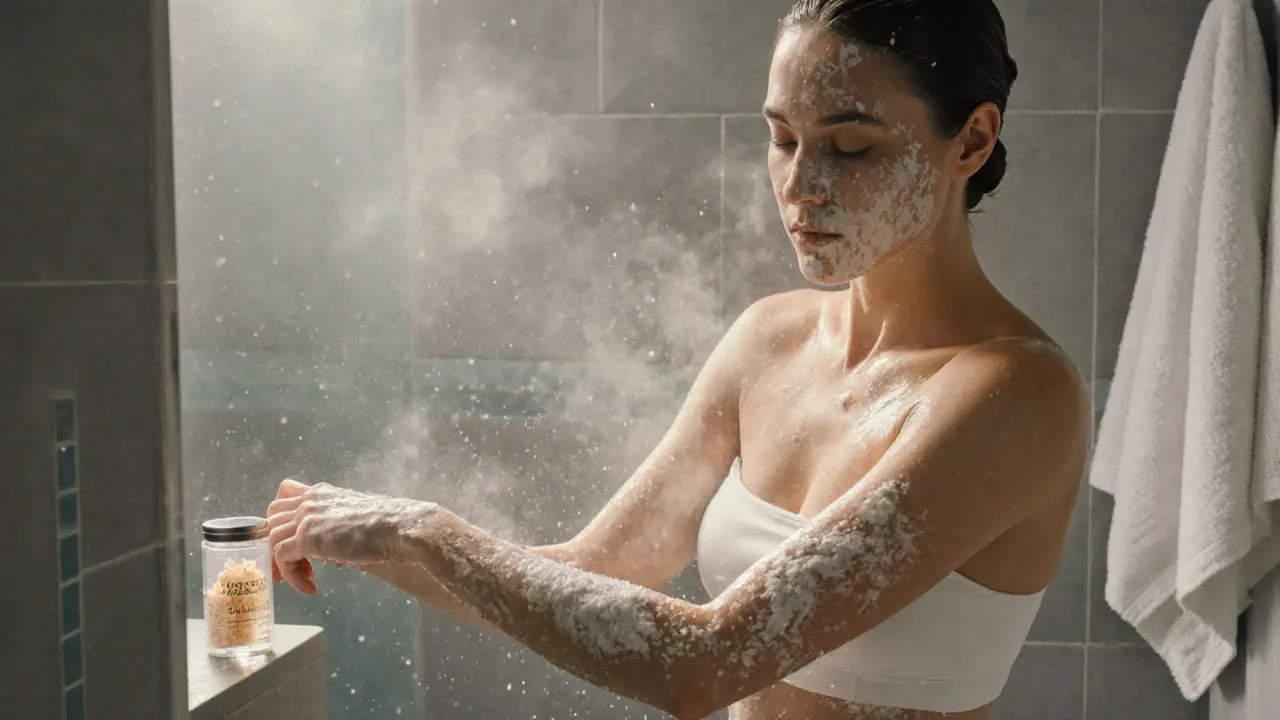
How to Practice Body Scrubbing Effectively
Setting Up for Success
Clear the shower floor of slippery toys or bath mats that could cause falls. Keep a towel within reach and have your favourite post‑scrub lotion ready. A calming playlist can turn the routine into a mini‑spa experience.
Choosing the Right Tools and Resources
Commercial scrubs range from budget‑friendly drugstore brands to luxury spa blends. If you enjoy DIY, start with basic ingredients: raw cane sugar, extra‑virgin olive oil, and a few drops of lavender essential oil. For professional guidance, a certified esthetician can recommend products suited to your skin type.
Step‑by‑Step Guide for Beginners
- Gather your scrub, a soft washcloth (optional), and a moisturizer.
- Turn the water to a comfortably warm temperature.
- Squeeze a pea‑size amount onto your hand; add a splash of water to soften the mixture.
- Begin with your arms, using gentle circles; increase pressure gradually.
- Move to knees, elbows, and feet-areas that accumulate the most dead skin.
- Rinse completely; ensure no granules remain.
- Immediately apply a hydrating lotion or body oil while skin is still damp.
Tips for Couples or Group Sessions
Sharing a scrub can be a bonding activity. One partner can handle the back while the other tackles legs. Just keep hygiene in mind-use separate containers or a clean spoon for each person.
Safety and Ethical Considerations
Choosing Qualified Practitioners or Products
When booking a spa, verify that the therapist holds a license from the Dubai Health Authority. Look for product certifications such as ISO‑9001 or cruelty‑free labels if ethics matter to you.
Safety Practices
| Practice | Purpose | Example |
|---|---|---|
| Patch Test | Prevent allergic reactions | Apply a dab on inner forearm, wait 24h |
| Use Gentle Pressure | Avoid micro‑tears | Light circular motions, no scraping |
| Keep Tools Clean | Stop bacterial growth | Rinse scrub container after each use |
Setting Boundaries
If you’re at a spa, tell the therapist if you prefer a lighter touch or if you have sensitive areas. At home, stop the scrub if you feel stinging or excessive redness.
Contraindications or Risks
People with eczema, psoriasis, open wounds, or recent laser treatments should avoid abrasive scrubs unless a dermatologist approves. Also, diabetics with reduced sensation need extra caution to prevent unnoticed skin damage.
Enhancing Your Experience with Body Scrubs
Adding Complementary Practices
Follow your scrub with a short dry‑brush session for extra circulation, or finish with a short meditation to deepen the relaxation effect.
Solo vs. Collaborative Sessions
Solo scrubbing lets you tune into your body’s signals. A partnered session can turn the routine into a pampering date night, but remember to keep each container separate for hygiene.
Using Tools or Props
A silicone exfoliating glove provides even coverage without the mess of loose granules. For a spa vibe, a bamboo brush adds an earthy feel while still being gentle.
Regular Engagement for Long‑Term Benefits
Consistency beats intensity. Two to three sessions per week keep dead‑cell buildup low without over‑exfoliating, which can strip natural oils and lead to irritation.
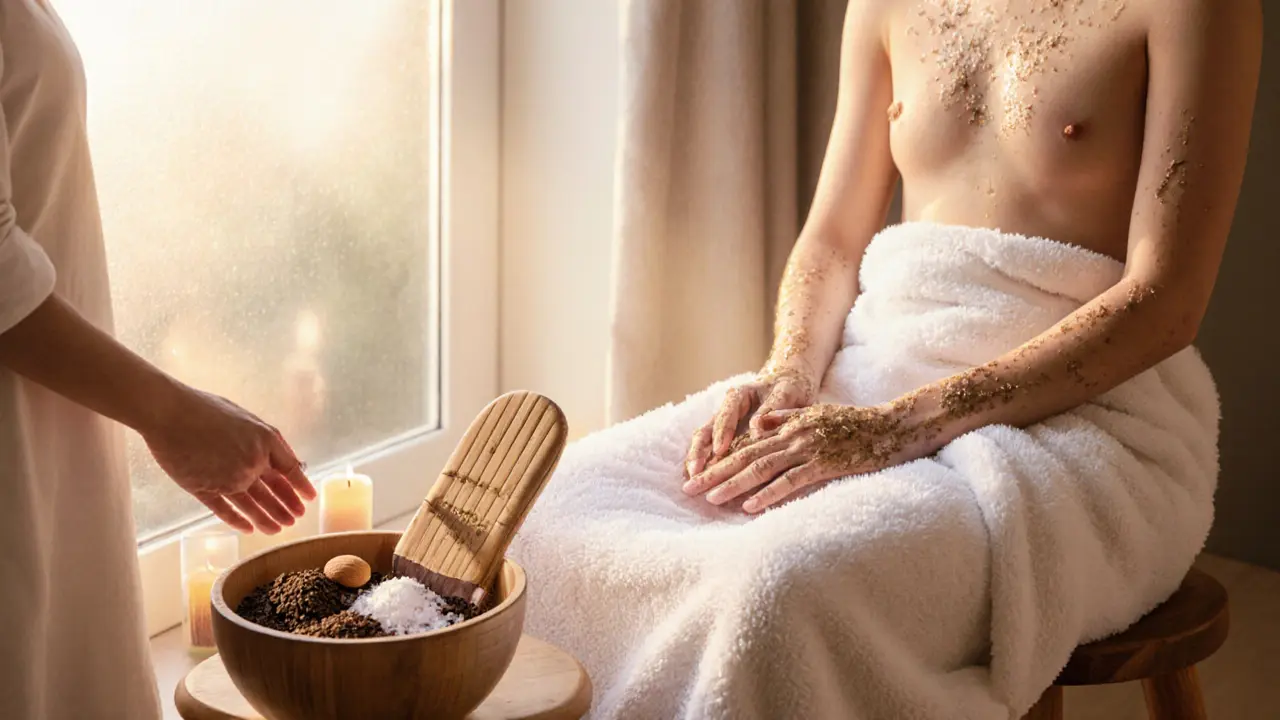
Finding Resources or Experts for Body Scrubs
Researching Qualified Professionals
Search for estheticians with a certificate from the International Spa Association (ISPA) or local Dubai licensing boards. Reading client reviews on platforms like Google or Trustpilot can reveal real‑world performance.
Online Guides and Communities
Websites such as the American Academy of Dermatology, plus forums like Reddit’s r/SkincareAddiction, offer tutorials, product round‑ups, and user experiences. Beware of hype; cross‑check claims with reputable skin‑care blogs.
Legal or Cultural Considerations
In the UAE, certain ingredients (e.g., alcohol‑based oils) may have usage restrictions in public spa facilities. Always confirm that a product complies with local health regulations before purchasing.
Resources for Continued Learning
Books like “The Body Scrub Handbook” by Dr. Lena Ortiz, YouTube channels such as “SkinScience Lab,” and local workshops at Dubai’s wellness centers can deepen your knowledge.
FAQ: Common Questions About Body Scrubs
How often should I use a body scrub?
For most skin types, 2‑3 times a week is enough. Over‑scrubbing can damage the skin barrier, so listen to how your skin feels and adjust accordingly.
Can I use a body scrub on my face?
Facial skin is thinner and more sensitive. Use a product specifically formulated for the face, or choose ultra‑fine sugar with a gentle carrier. Regular facial exfoliants often contain lower‑abrasion particles.
What’s the difference between a sugar scrub and a salt scrub?
Sugar granules are smaller and dissolve more quickly, making them ideal for sensitive areas. Salt crystals are larger, offering a deeper exfoliation suitable for elbows, knees, and callused feet.
Is it safe to combine a body scrub with a chemical exfoliant?
Mixing both in the same session can over‑exfoliate and cause redness. If you want to use both, alternate days-mechanical scrub one day, chemical the next-or keep chemical use in your nightly routine and the scrub for showers.
Do I need a body scrub if I already moisturize daily?
Moisturising hydrates the top layer, but it doesn’t remove dead skin. Adding a scrub a few times a week allows moisturisers to penetrate better, maximizing their effectiveness.
Conclusion: Why Body Scrubs Are Worth Exploring
When used wisely, body scrubs deliver smoother skin, brighter appearance, and a mini‑massage that lifts your mood. The key is moderation, proper technique, and picking the right formulation for your skin type. Whether you’re at a Dubai spa or crafting a DIY blend at home, a thoughtful scrub can become a simple yet powerful self‑care ritual.
A Path to Radiant Skin
Regular exfoliation clears the way for better hydration and product performance, turning everyday skincare into a more effective routine.
Try It Mindfully
Start with a gentle sugar scrub once a week, track how your skin reacts, and adjust frequency. If you have concerns, consult a dermatologist before ramping up.
Share Your Journey
Have you tried a new body scrub or discovered a favorite DIY recipe? Drop a comment below, and follow the blog for more skin‑care tips!
Some links may be affiliate links, but all recommendations are based on research and quality.


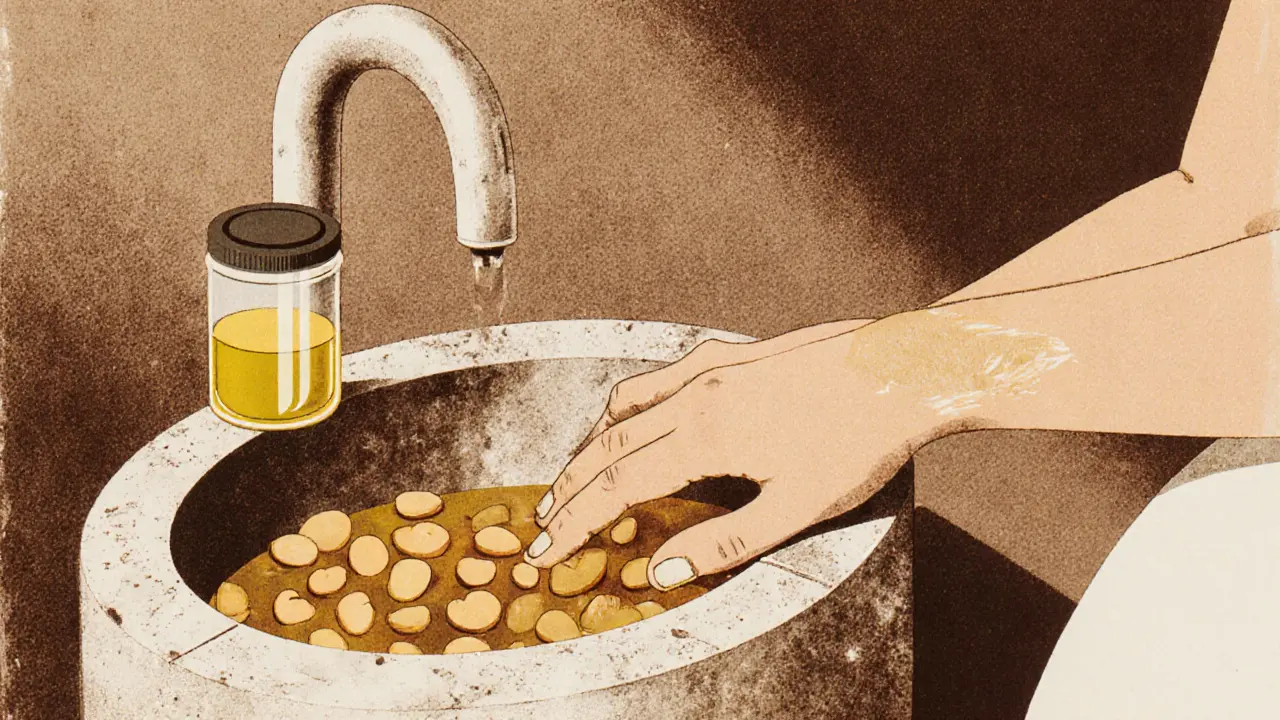
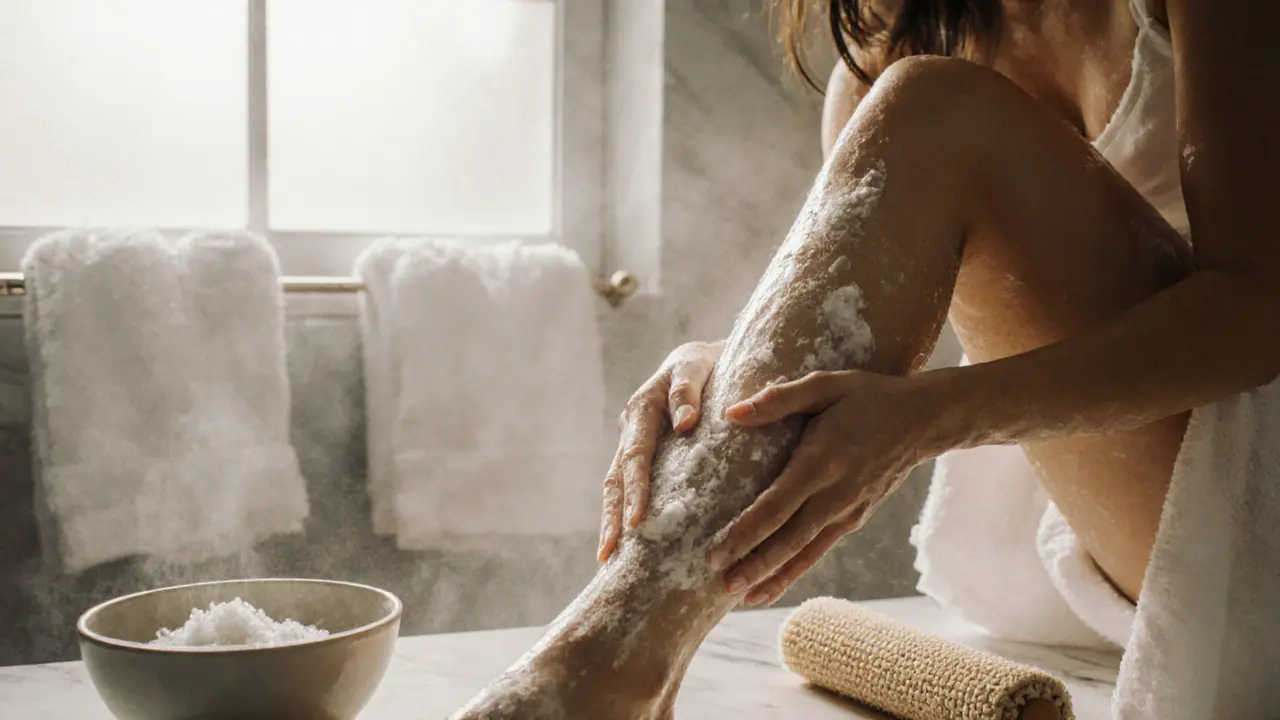
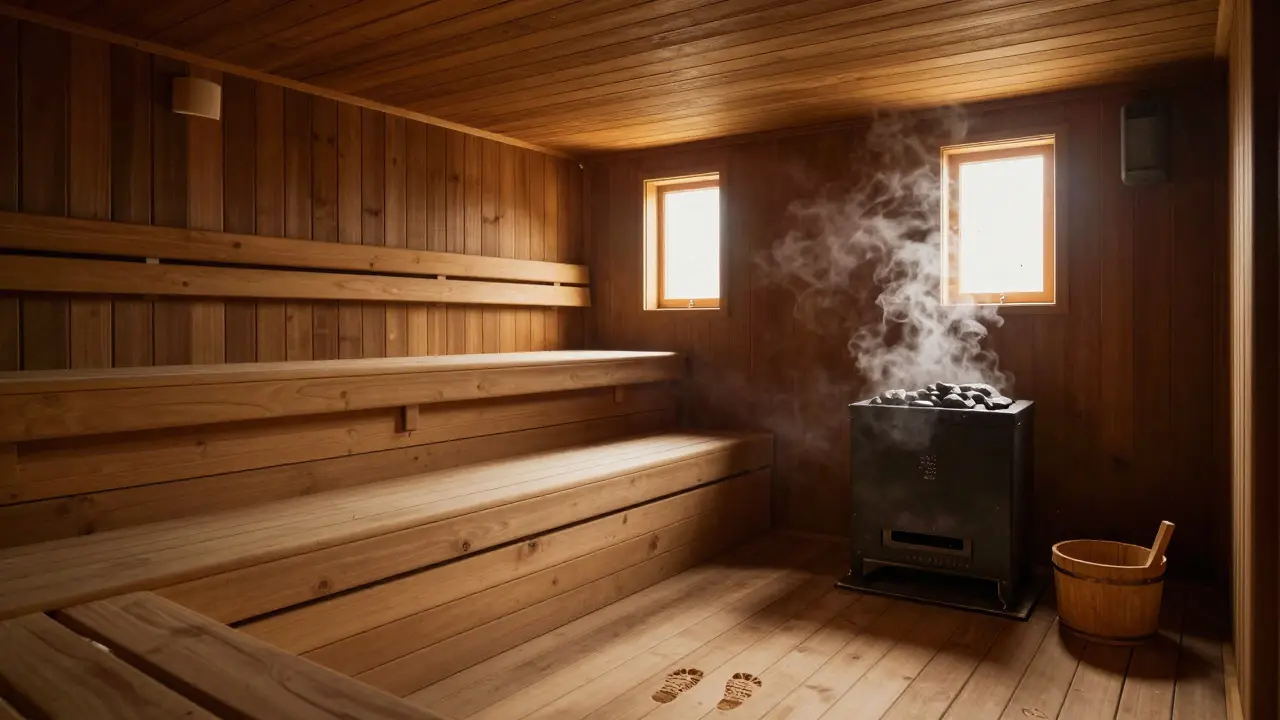
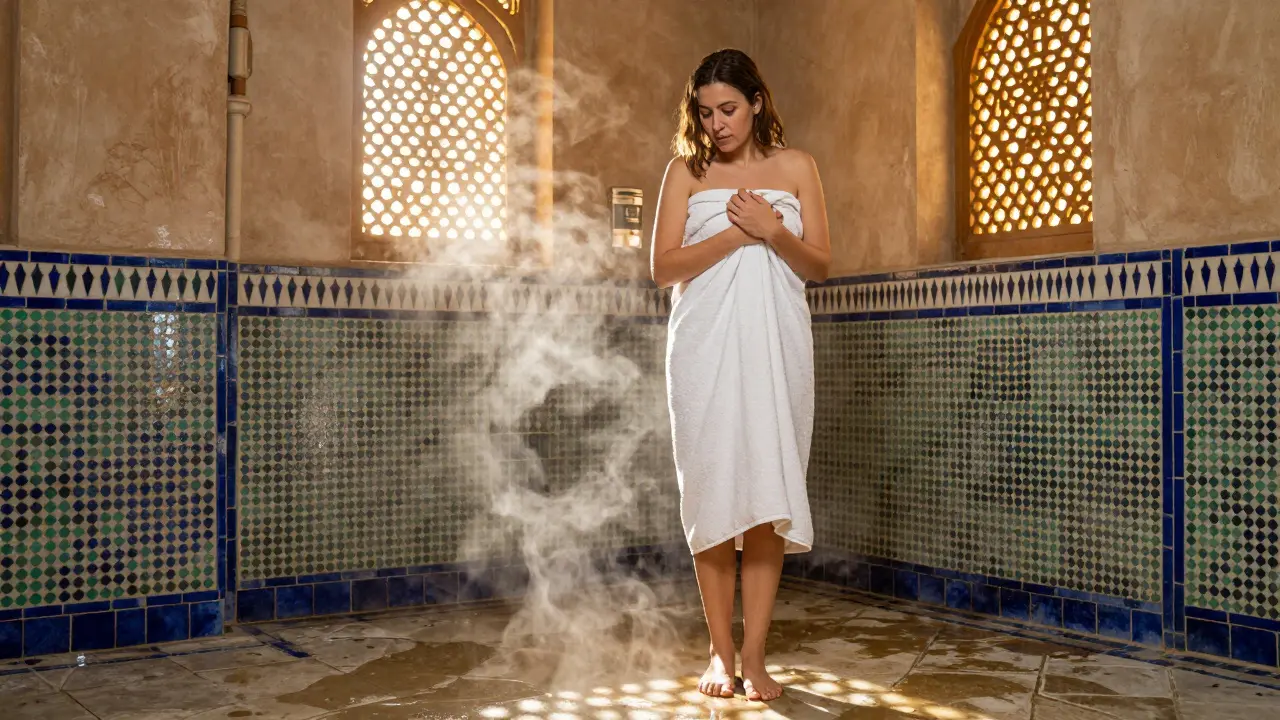

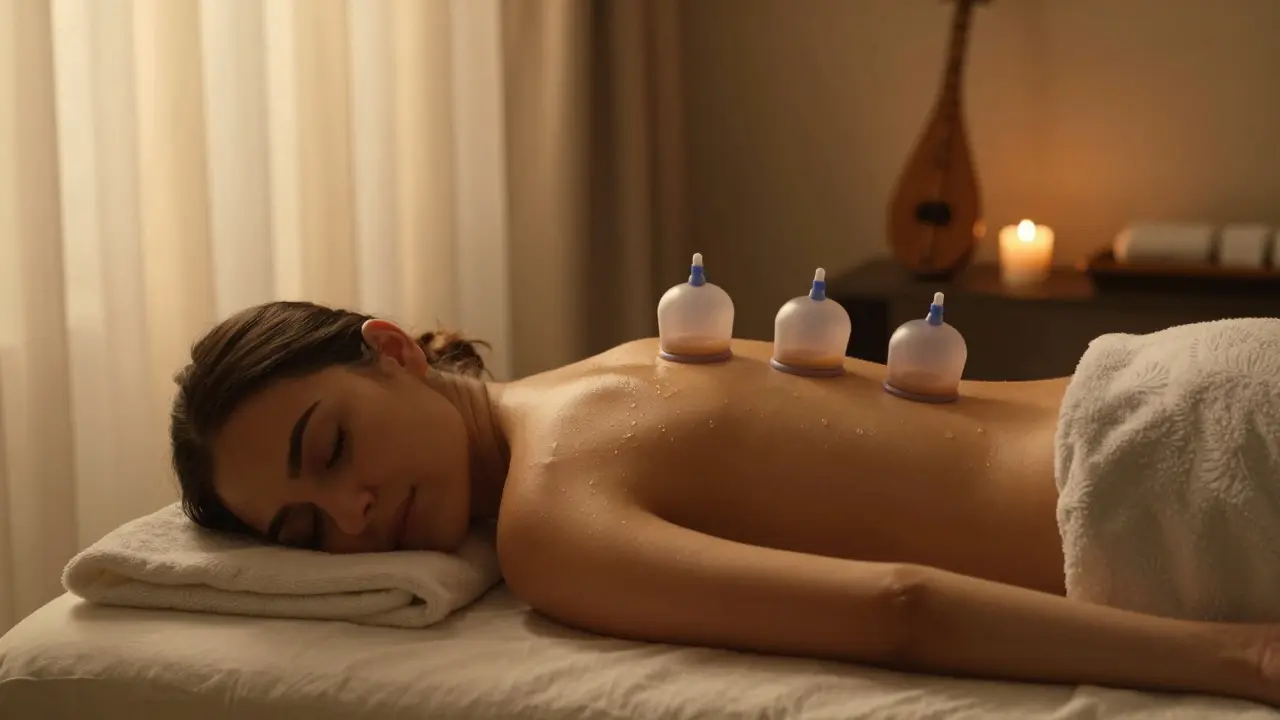
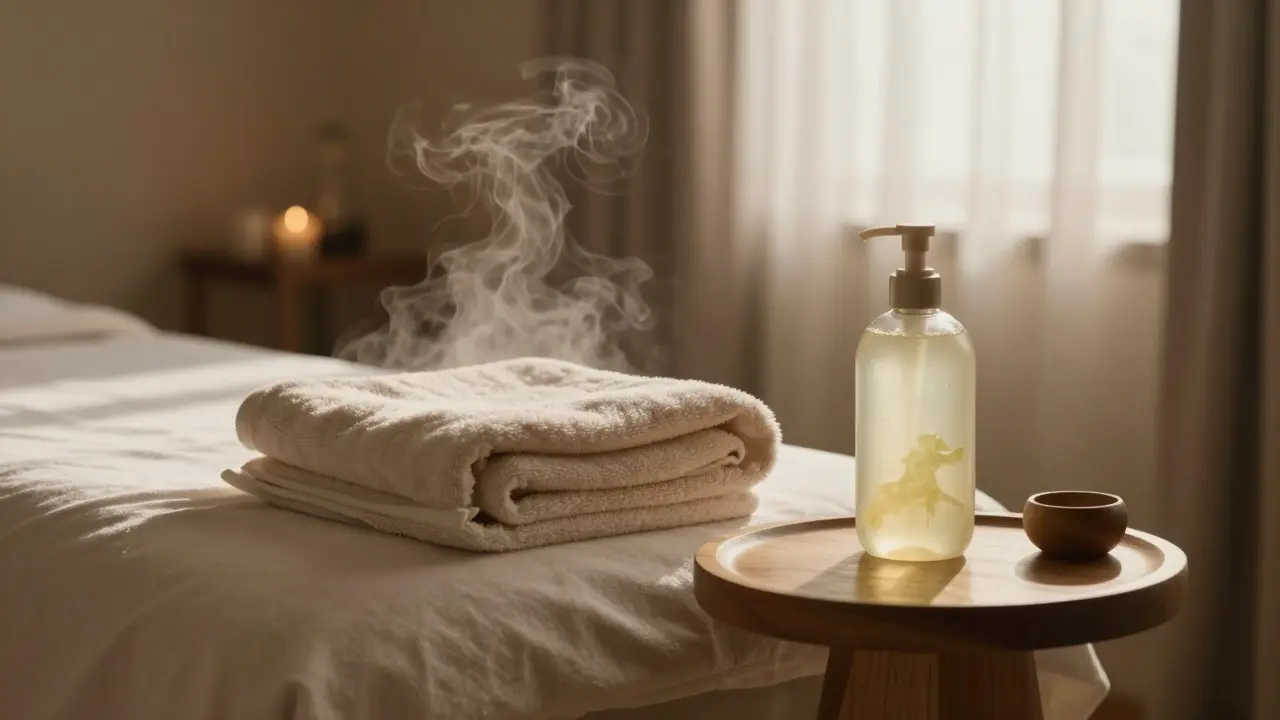
Fletcher Sacré
October 17, 2025 AT 13:53Wow, I just read that whole guide and felt like I was on a rollercoaster of skin science. The history part about Egyptian apricot kernels? Absolutely mind‑blowing, even if it sounded like a cooking recipe gone rogue. But honestly, if you’re spending $30 on a scrub that smells like a spa, you might as well be buying a mini vacation. Just remember, exfoliaiton can be harsh if you overdo it-listen to your skin.
Asher Luptak
October 18, 2025 AT 17:06Exfoliation, whether mechanical or chemical, serves as a gentle reminder that our skin, like any ecosystem, thrives on balance; yet, many overlook the simple joy of a well‑timed scrub, especially after a hot shower. The guide highlighted the importance of patch testing, which, in my experience, is as crucial as applying sunscreen-both act as protective layers, ensuring we dont unintentionally harm ourselves. Remember, consistency beats intensity: two to three sessions weekly, not daily, is the sweet spot for most folks. Also, dont forget to hydrate after scrubbing; the moisturizer locks in the benefits, making the whole routine more effective. Lastly, if youre ever unsure, consult a derm-your skin will thank you later.
Franklin onah
October 19, 2025 AT 22:16When you think about body scrubs, you’re really entering a dialogue between physics and biology that most people ignore.
The abrasive particles act as micro‑tools that dislodge keratin bridges, allowing fresh cells to surface.
This process, though simple, triggers a cascade of cellular responses that can be measured in increased transepidermal water loss reduction.
Studies from reputable dermatology journals have shown that regular mechanical exfoliation improves skin hydration by up to 30 percent.
That number isn’t magic; it reflects better penetration of humectants and occlusives into the stratum corneum.
However, the benefits are dose‑dependent, meaning that over‑scrubbing can strip the natural lipid barrier and lead to irritation.
A balanced approach-usually two to three times per week with gentle pressure-optimizes the trade‑off between renewal and protection.
Moreover, the act of massaging a scrub provides a mild circulatory stimulus, which can aid in the removal of metabolic waste products from the dermal layers.
This is why many athletes incorporate a light scrub after intense training sessions to accelerate recovery.
From a chemical standpoint, the physical exfoliation also primes the skin for subsequent topical applications, such as vitamin C serums or retinoids, by increasing their bioavailability.
If you combine a scrub with a chemical exfoliant in the same session, you risk exceeding the skin’s tolerance threshold, leading to erythema and barrier disruption.
Therefore, the recommended protocol is to alternate days: mechanical on Monday and Thursday, chemical on Tuesday and Friday, leaving the weekend for rest.
Furthermore, the choice of abrasive matters; sugar granules dissolve faster and are gentler on sensitive areas, while sea salt provides a more robust polishing effect for tougher zones like elbows and knees.
DIY enthusiasts often overlook the pH impact of their carrier oils, which can influence the overall skin environment if the oil is too acidic or too alkaline.
In summary, body scrubs are a valuable tool in a comprehensive skincare regimen, provided they are used wisely, with appropriate frequency, pressure, and product selection.
Annah Hill
October 21, 2025 AT 02:53Body scrubs are just fancy sandpaper, nothing more.
Lynn Ma
October 22, 2025 AT 05:16Listen up, skin rebels! If you’ve never splashed a coffee‑ground scrub on your thighs, you’re missing out on a caffeine‑kissed glow that’ll make every towel feel like a silk sheet. Dive into that jar, swirl it like you’re painting a masterpiece, and let the aroma coax your nerves into a mini‑vacation. Trust me, the world needs more people who treat exfoliation like a confetti party for the epidermis.